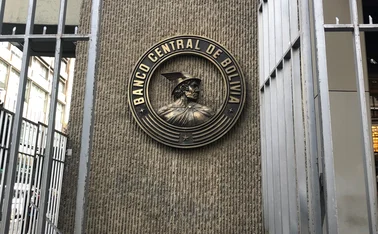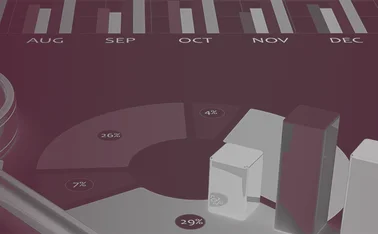
Initiative of the year: Reserve Bank of New Zealand
The central bank's enterprise risk management system is a leader in the field

Central banks are conservative institutions. They face an unusual blend of risks, not only financial and operational risks, but also particularly acute reputational risks that could impact their autonomy from government, the trust of the public and ultimately their ability to stabilise the economy. Partly for these reasons, the pace of change at central banks occasionally feels glacial. The status quo is safe. As the saying goes, "If it ain't broke, don't fix it."
The Reserve Bank of New Zealand (RBNZ) bucks the trend, notably with the development of its enterprise risk management (ERM) system. The system gives the central bank a much clearer picture of the risks it faces, how those risks are developing over time and what risks might be on the horizon. The idea is to improve both the resilience of the central bank at any point in time as well as its adaptability. The system has already laid the groundwork for a number of major new projects and preliminary results suggest risks throughout the organisation have been dampened.
Governor Graeme Wheeler emphasises the system's success. "I think it's fair to say that as 2015 comes to a close, we feel confident that ERM is embedded as an integral part of our future success, not just in a major project capacity, but in the way managers think about enterprise risk across the institution," he says.
'Pinnacle' of a long process
Steve Gordon, head of risk assessment and assurance at the RBNZ, describes the past year as the "pinnacle" of a long process. He joined the central bank in 2011, and with the backing of the then governor Alan Bollard and his deputy Don Able set about improving the central bank's risk management framework, which until then was largely reactive and had lacked a systematic approach to risk.
With around 270 staff, manpower is a precious commodity at the RBNZ, so Gordon had limited resources to work with. Only Gordon and senior risk analyst Willie Shum are specifically devoted to risk management at the RBNZ, although he recruited 'risk leads' to help champion the system throughout the organisation alongside their usual roles. This was not a simple task as the central bank was working to cut costs at the time, even as its remit has grown. "I did not have or need an open chequebook," says Gordon.
Another vital step in the process was the creation of a bespoke 'data model' to allow risks to be classified and then rated on the basis of likelihood and impact. The model was developed in-house to keep costs down. The use of "common and consistent language" allowed the RBNZ's senior management to more easily engage with risks and meant risks from very diverse sources could be integrated into the overarching model. As well as being able to classify monetary policy risks alongside payments, operational risks and more, a "global scan" can spot risks on the horizon, to be dealt with early and be plugged into the ERM system. The central bank's internal audit is similarly input into the system. "That provides real richness for us to analyse," Gordon says.
Engagement is key
Gordon attributes much of the system's success to the extent to which risk culture has spread through every part of the central bank. The individuals designated as 'risk leads' have helped instil the importance of risk management in each team, and strong leadership from senior officials has also helped. "We have brought business and commercial meaning to the system," Gordon says. "It is not a siloed, backroom function that consists of a register of a hundred risks. People see the value of it and that really helps the culture."
Wheeler describes ERM as a "critical component" of the central bank's business operations, and says he believes it will continue to be so even as years pass, priorities change, and senior managers come and go. "I am confident that we have deeply institutionalised ERM and built it into the fabric of our management processes and engagement with the board," he says. "This has been possible because the benefits of our ERM practices have been clear to colleagues throughout the bank and within the board."
Driving change
Gordon says the ERM approach has helped the RBNZ identify problems in existing systems and be more confident about the future, which has provided the foundation for a number of major projects. The central bank is in the process of replacing its real-time gross settlement system, and is currently deciding whether to outsource its securities settlement system to a private sector party. Other major projects supported by ERM include the launch of New Zealand's new banknotes and an upgrade of the RBNZ's treasury risk management system. "Two years ago I do not think we would have been in a position to entertain the idea of such major projects. But through good risk management we got to the position of stability, and then thinking forward about risks into the future," Gordon says.
Risks also seem to be on the decline. While the overall number of incidents remained roughly flat in 2015, the number of high- and medium-risk incidents fell 50% relative to 2014, and to date, 74% of the issues that have been flagged up have resulted in some sort of positive change to a system or process within the central bank.
The RBNZ has received a lot of interest from central banks, public authorities and other organisations that are interested in implementing their own version of ERM. If Gordon is right about the system improving the central bank's agility and if others implement similar systems with similar success, central banking could become a little faster moving in future.
The Central Banking awards were written by Christopher Jeffery, Tristan Carlyle, Daniel Hinge, Arvid Ahlund, Dan Hardie and Rachael King.
Only users who have a paid subscription or are part of a corporate subscription are able to print or copy content.
To access these options, along with all other subscription benefits, please contact info@centralbanking.com or view our subscription options here: subscriptions.centralbanking.com/subscribe
You are currently unable to print this content. Please contact info@centralbanking.com to find out more.
You are currently unable to copy this content. Please contact info@centralbanking.com to find out more.
Copyright Infopro Digital Limited. All rights reserved.
As outlined in our terms and conditions, https://www.infopro-digital.com/terms-and-conditions/subscriptions/ (point 2.4), printing is limited to a single copy.
If you would like to purchase additional rights please email info@centralbanking.com test test test
Copyright Infopro Digital Limited. All rights reserved.
You may share this content using our article tools. As outlined in our terms and conditions, https://www.infopro-digital.com/terms-and-conditions/subscriptions/ (clause 2.4), an Authorised User may only make one copy of the materials for their own personal use. You must also comply with the restrictions in clause 2.5.
If you would like to purchase additional rights please email info@centralbanking.com test test test








